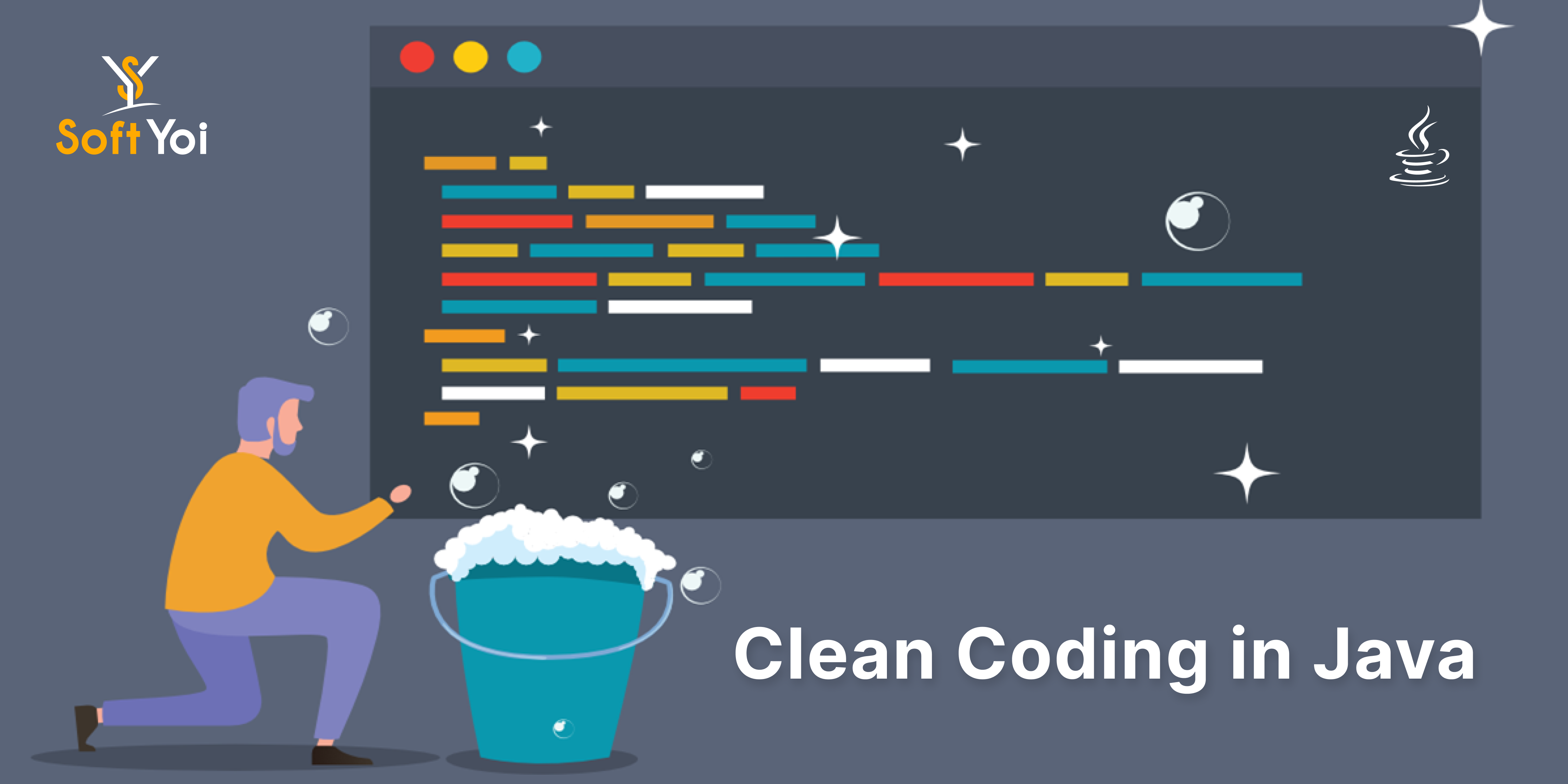Jul 5 2023
Clean Coding in java

What Is a Clean Code?
Clean code can be summarized as a code that any developer can read and change easily.
Now that we’ve gone through enough background, let’s see how we can incorporate clean coding principles in Java development. Java offers a lot of best practices that can help us write clean code. We’ll categorize them in different buckets and understand how to write clean code with code samples.
Structure
Before even starting to write any code, think about your program: classes, functions, structures, and so forth. Use packages and do not add too many classes to one package unless the classes fit within the same category. The more you plan, the easier it will be to keep writing your code — otherwise, you will have to restructure and refactor your code in the future. Common Uses of Well-Structured Programming Language
- A well-structured programming language is one that encourages good practice in the user.
- The use of well-structured programming languages and practices benefits both the creating programmers and any that later work with the code.
- While the usage of modules isn’t always present, modular coding languages are one example of well-structured coding languages.
Naming Conventions
By using standard Java naming conventions, you make your code easier to read for yourself and other programmers. The readability of the Java program is very important. It indicates that less time is spent figuring out what the code does.
Java naming convention is a rule to follow as you decide what to name your identifiers such as class, package, variable, constant, method, etc.
But, it is not forced to follow. So, it is known as convention not rule. These conventions are suggested by several Java communities such as Sun Microsystems and Netscape.
All the classes, interfaces, packages, methods, and fields of Java programming language are given according to the Java naming convention. If you fail to follow these conventions, it may generate confusion. The following are the key rules that must be followed by every identifier:
Method parameters
- A well-structured programming language is one that encourages good practice in the user.
- The use of well-structured programming languages and practices benefits both the creating programmers and any that later work with the code.
- While the usage of modules isn’t always present, modular coding languages are one example of well-structured coding languages.
For example:
private void addUser(String name, String street, String houseNumber, String city, String country).
The idea for refactoring:
private void addUser(User user).
Hard Coding
The reason it is called hardcoding is because of the fact that the practice reduces the flexibility of the code by forcing actual values into the source code.
it is so easy to hardcode something when you are in a rush. But heavily hardcoded code is so difficult to maintain and leads to bugs and mistakes.
Hardcoding values in code can often lead to multiple side effects. For instance, it can lead to duplication, which makes change more difficult. It can often lead to undesirable behavior if the values need to be dynamic In most of the cases, hardcoded values can be refactored in one of the following ways:
- Consider replacing with constants or enums defined within Java
- Or else, replace with constants defined at the class level or in a separate class file
- If possible, replace with values that can be picked from configuration or environment
Code Refactoring
The basic purpose of code refactoring is to make the code more efficient and maintainable. This is key to reducing technical costs since it’s much better to clean up the code now than pay for costly errors later. Code refactoring, which improves readability, makes the QA and debugging process go much more smoothly. And while it doesn’t remove bugs, it can certainly help prevent them in the future. Some Tips for Doing Code Refactoring Techniques Right
- Code refactoring should be done as a series of small changes, each of which makes the existing code slightly better while still leaving the program in working order. Don’t mix a whole bunch of refactorings into one big change.
- New functionality should not be created during refactoring. Do not mix refactoring and direct the development of new features. Try to separate these processes at least within the confines of individual commits.
The reason it is called hardcoding is because of the fact that the practice reduces the flexibility of the code by forcing actual values into the source code.
it is so easy to hardcode something when you are in a rush. But heavily hardcoded code is so difficult to maintain and leads to bugs and mistakes.
Hardcoding values in code can often lead to multiple side effects. For instance, it can lead to duplication, which makes change more difficult. It can often lead to undesirable behavior if the values need to be dynamic In most of the cases, hardcoded values can be refactored in one of the following ways:
- Consider replacing with constants or enums defined within Java
- Or else, replace with constants defined at the class level or in a separate class file
- If possible, replace with values that can be picked from configuration or environment
Debugging
Debugging is the routine process of locating and removing bugs, errors, or abnormalities from programs. It’s a must have skill for any Java developer because it helps to find a subtle bug that is not visible during code reviews or that only happens when a specific condition occurs. Some of the other benefits of debugging are mentioned below:
- Reports error conditions immediately, which allows earlier detection of an error and makes the process of software development stress-free and unproblematic.
- It provides maximum useful information on data structures and allows its easy interpretation.
- Assists the developer in minimizing useless and distracting information.
- Through debugging the developer can avoid complex one-use testing code, which helps the developer save time and energy in software development.
Java Logging
A log usually means maintenance of some sort of record. From the perspective of programming, it is a process of writing messages in a log file during program execution. Persisted message logs are referred, typically by the programmer, to collect certain runtime statistical information that, when analyzed, can reveal unforeseen situations. there are four primary uses of logging:
- For problem diagnosis by end users and system administrators.
- It is convenient for field service engineers to diagnose the problem from logged messages and fix it quickly.
- Development organization can trace the internal execution of a particular subsystem and analyze it
- Developers can debug the application under development by getting a quick insight on the underlying problem from logged messages.
Code Comment
Code comments can be beneficial while reading code to understand the non-trivial aspects.
First of all, we should be aware that comments are the description written in the source code within some special characters so as to get ignored by the compiler while running the code. Comments are important as source code because of the following two reasons.
- In an organization, we work in a team; there are many programmers who work on the same project. So, the well commented functions/logics are helpful to other programmers to understand the code better. They can easily understand the logic behind solving any problem.
- If you see/edit code later, comments may help you to memorize your logic that you have written while writing that code.
SonarLint
SonarLint is available a stand-alone extension for the Eclipse IDE.
You can install SonarLint into Eclipse via the marketplace client. The update site is http://eclipse.sonarlint.org. See Sonar on Eclipse for details.
SonarLint can be used together with SonarQube or SonarCloud, allowing your team to always be on the same page when it comes to Code Quality and Security. Your team is on the same page
- All the team uses the same code quality and security rules
- Project settings (such as code exclusions) are shared at the team level
- Team members are notified if a breaking change makes it to the main branch
SonarQube
SonarQube (formerly Sonar) is an open source platform for continuous inspection of code quality. It provides a server component with a bug dashboard which allows you to view and analyze reported problems in your source code.
Using SonarQube via Maven or Gradle is very simple and very well described on the SonarQube homepage

